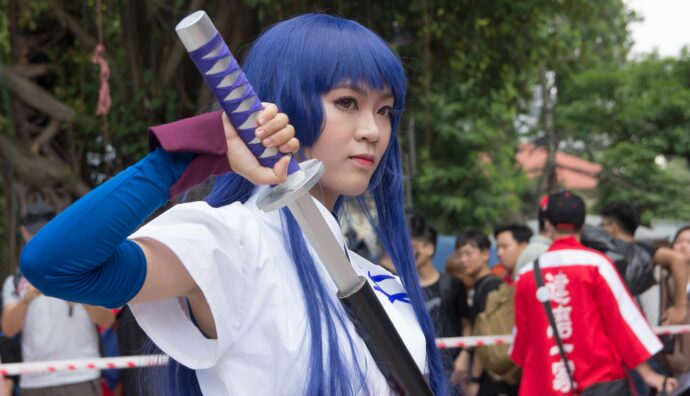Cosplay is an increasing phenomenon. From theater to masquerade balls to carnival costumes, dressing a costume and making up to look like real or fictional characters is a very ancient habit.
However, Cosplay is a quite recent trend, which started – needless to say – in Japan and from there has gone throughout the world through the diffusion of manga and anime. At events dedicated to the world of comics you can meet many people who dress like characters from their favorite comics or cartoons’ novels.
Let’s look at the differences between Cosplay and Aikido.
Cosplay: it is a phenomenon born in Japan, it has spread through non-institutional channels and has effectively created a real subculture.
Aikido: it is a discipline born in Japan, it spread through American and European communities that were part of niche cultural movements and effectively created a real subculture.
Cosplay: the cosplayer loves to spend a lot of time reading and watching manga and anime, and is often passionate about oriental culture. He/she eats oriental food, watches movies in the original language, and often studies some basic elements of Japanese or Korean.
Aikido: the aikidoka eats. Oriental or non-oriental: any chance is a good one to organize after-training meals. The aikidoka likes to spend a lot of time watching reruns of “Under Siege,” YouTube tutorials of the techniques he/she has to study up for tests, and clips of other styles just to criticize other Dojos. Usually, the aikidoka reads little. He/she is passionate about oriental culture and the Japanese language and in fact puts his/her kimono in the bag to go to the gym.
Cosplay: Cosplayers hang out at big events.
Aikido: aikidoka hang out at big events. Which are usually all scheduled on the same weekend. In fact, at big events you always see the same faces of the clan you belong to.
Cosplay: Cosplayers spend a lot of money buying costume, accessories and makeup. If they then follow the costuming fashion and want to become copies of the characters, they spend a lot of time replicating gestures, sentences…
Aikido: aikidoka, once they have thrown their caution to the wind, spend a lot of money to buy wooden weapons (more or less with a mark-up of about 87236492874% compared to the same hoe handle you buy at Lowe’s) . Not to mention the hakama or the new gi with the Aikikai logo sewn on. They observe their instructors, watch videos of O’Sensei and worldwide famous teachers, then try to walk like them, shake the jo like them, tie the belt like them. Sometimes they start talking like them.
In the end…
Cosplay: To their families, cosplayers are the strange ones. They don’t understand what’s interesting or fun about dressing up as Sailor Moon in your forties, or why you have to travel six hours from home to play a LARP (live action role-playing).
Aikido: for their families, Aikidoka were already strange before; and at the Dojo they found at least a free port. They don’t understand what’s constructive or fun about being tortured on the wrist or being thrown to an age when you would normally be thinking about starting a family or retiring. They don’t understand why you have to go far from home to sleep on a tatami and the next day spend hours doing funakogi undo. (Sometimes even Aikidoka don’t understand this).
We could go on for a while. Cosplayer and aikidoka friends don’t take it wrong. We tried to reflect with a smile on one aspect: a discipline requires practitioners to allow themselves to be contaminated.
It requires stripping oneself of one’s habits to wear oneself with new perspectives. Just like for (healthy) cosplay, not for being Sailor Moon 24/7, every day of the year. What a tragedy it would be (for some: it is) if that were the case. What if the practice of a discipline had such an impact that people became clones?
If, with a little fun and a little effort, a Japanese shape can empower and improve the person who wears it; if people are able to expand their critical capacity, choice and discernment, then “wearing the costume” of a martial artist is an excellent investment. It is a tool for working on yourself.
How many times do we find ourselves investing tremendous efforts to live the others’ lives? To take on the roles of a character?
Disclaimer: picture by Meiji from Pexels

